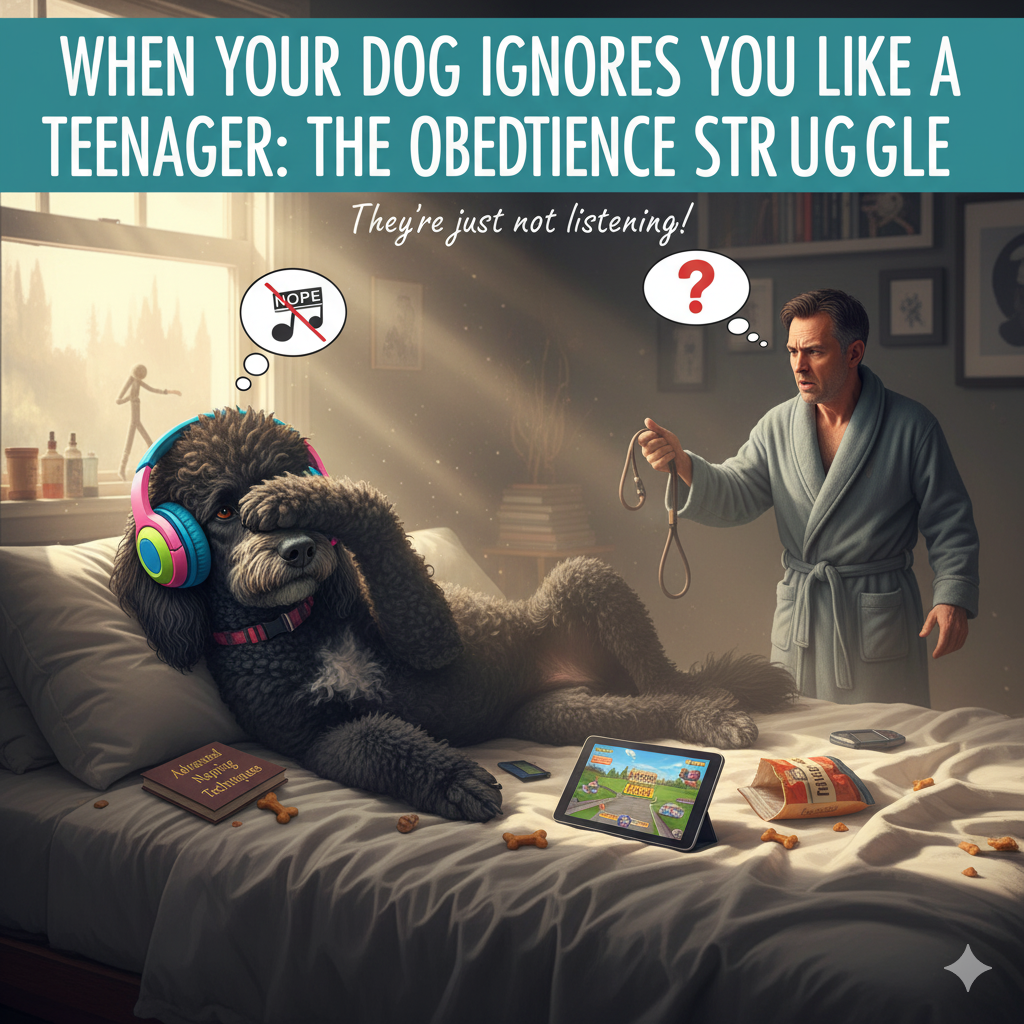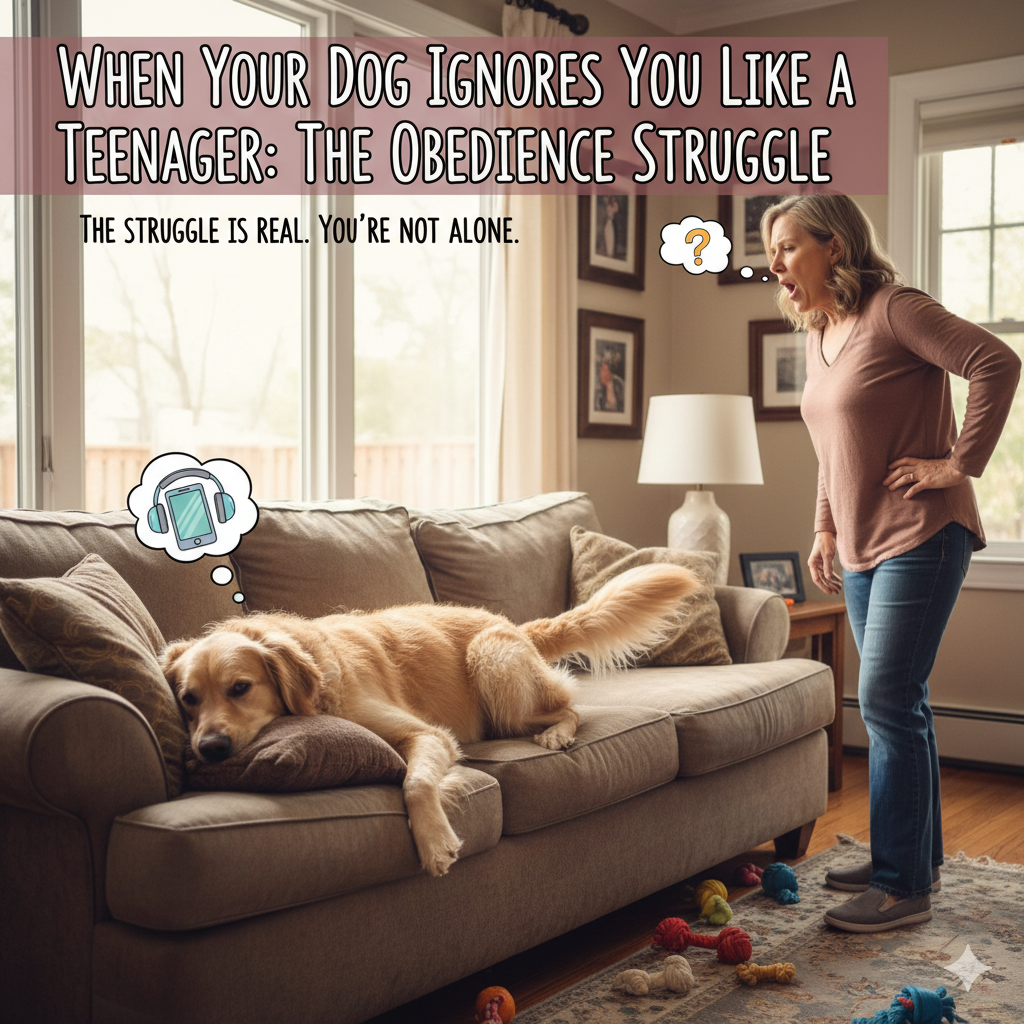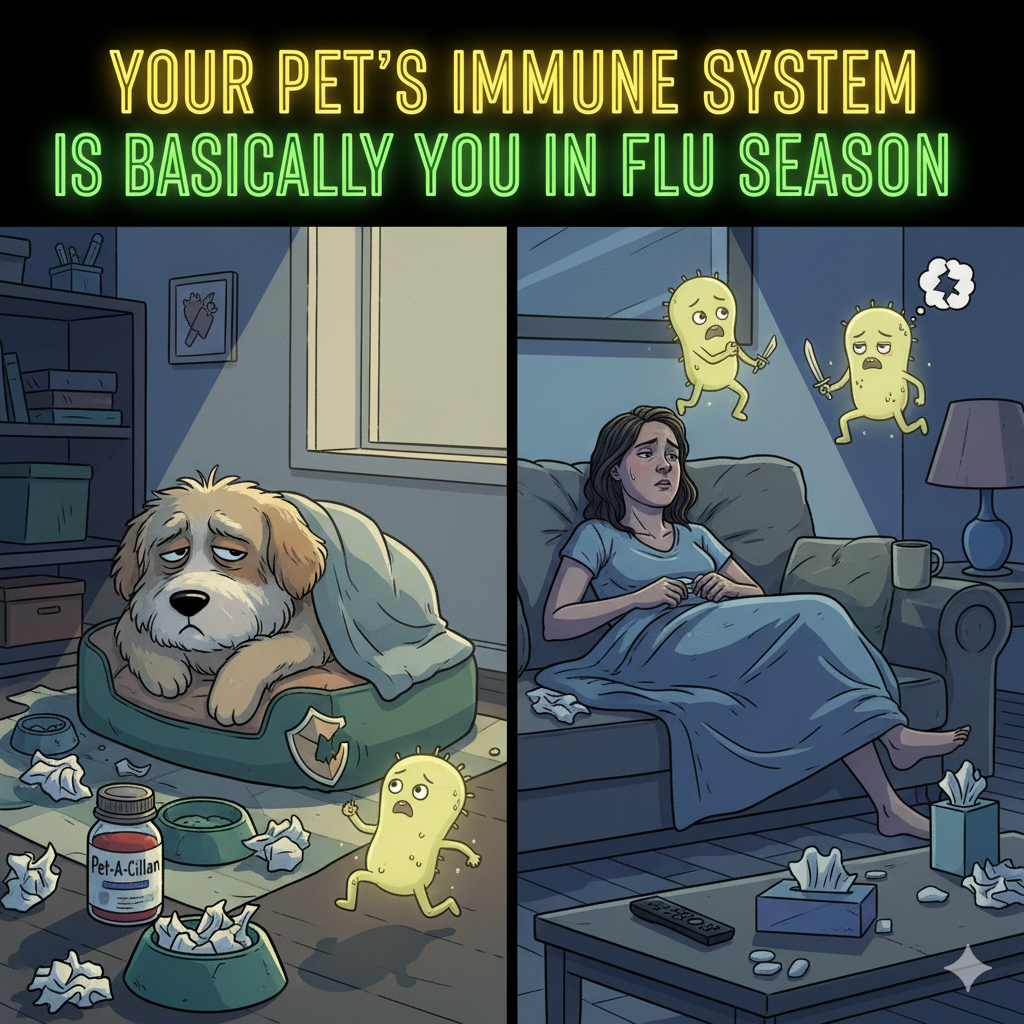Welcome to the “Selective Hearing” Stage of Pet Parenting
You call their name — nothing. You grab the leash — still nothing. But open a chip bag from three rooms away? Suddenly, they teleport to you like it’s the canine version of the Bat-Signal.
Congratulations, your dog has entered the “teenage rebellion” phase of obedience — where “sit” becomes a suggestion, “stay” is a joke, and “come here” translates to “I’ll think about it, Susan.”
Taking care of a dog who ignores you is like living with a furry adolescent who believes rules are optional and the backyard is their private country.
The Obedience Decline: From Gold Star Student to Furry Anarchist
Remember when your dog used to sit instantly for treats, tail wagging like a metronome? Now they stare at you like, “Do you even go here?”
It starts small — a little delay before sitting, a quick glance before deciding that “fetch” means “you go get it.” Before you know it, you’re shouting commands in public while your dog pretends not to know you, and strangers assume you’re having a personal breakdown in the park.
Dogs, much like human teens, test boundaries. It’s not because they hate you (well… probably not). It’s because they’re exploring independence, confidence, and, apparently, how to make you look foolish in front of your neighbors.
Why They Do It: The Canine Psychology Behind the Attitude
Your dog ignoring you isn’t (always) rebellion — it’s science, baby.
Dogs have phases of focus and distraction just like kids.
1. They’re Growing Up
Between 6 months to 2 years, dogs hit adolescence. Hormones, curiosity, and a sudden interest in sniffing everything turn your obedient pup into a chaos machine.
2. You’ve Become Background Noise
You say “sit” 50 times a day. Eventually, it’s just white noise. Dogs learn through novelty — when commands sound the same every time, they start ignoring them.
3. You’ve Been Out-Bribed
If your treat game hasn’t evolved since puppyhood, your dog’s motivation has. That same biscuit doesn’t impress a seasoned diva anymore. You’re dealing with a palate that demands freeze-dried salmon and applause.
4. You’re Competing With the World
Every scent, leaf, squirrel, or gust of wind is more interesting than your “stay.” Canine FOMO is real.
Training Through the Drama
Let’s be real — training a dog that’s decided you’re boring is like teaching algebra to someone mid-text argument. But it’s doable — with humor, patience, and possibly coffee.
Step 1: Lower Your Expectations (and Your Voice)
Shouting doesn’t work. It just turns you into background noise with volume. Speak calmly, clearly, and confidently. Dogs respect calm authority — not chaos energy.
Step 2: Bring Out the Big Treats
You need to upgrade your bribes. Forget basic biscuits; bring in high-value rewards — think chicken, cheese, or that fancy salmon treat that costs more than your lunch.
Step 3: Make It a Game
Training doesn’t have to be military school. Keep sessions short, fun, and full of movement. A five-minute “sit-stay-fetch” session is better than a frustrated 30-minute standoff.
Step 4: Rebuild the Bond
Dogs obey who they trust and respect. Spend time together off-duty: play, cuddle, explore. They’ll start wanting to listen again — not because they have to, but because they want to.
Step 5: Consistency Is Your New Religion
Your dog isn’t being “bad” — they’re being confused. Mixed signals (“no couch!” one day and “okay fine, but just this once” the next) destroy training. Be consistent. Even when it’s inconvenient.

The Public Humiliation Phase
Let’s talk about the walk of shame — when your dog ignores you in public.
You’re yelling “COME!” while your furry teen is halfway across the park, sniffing something gross. People watch. You sweat. You consider faking amnesia.
The truth? Every dog parent goes through this. Some just hide it better. Training doesn’t eliminate embarrassment — it just makes it happen less often.
So next time your dog acts like a brat in front of strangers, take a deep breath. Remember: those people have been there too. Or they will be.
Emotional Damage: The Hurt of Being Ignored by Your Favorite Creature
Let’s be honest — when your dog ignores you, it hurts.
It’s that same sting as when your best friend leaves you on read.
You feed them, walk them, love them, and yet they stare blankly when you say “come here.” It’s personal. It’s betrayal. It’s also temporary.
Because even when they’re ignoring your commands, they’re still watching you. They still follow you from room to room. They still wag their tail when you finally give up and sit down. That’s their way of saying, “I love you, I just don’t do authority right now.”
The Comeback: From Chaos to Connection
Here’s the good news — obedience rebounds.
With patience and humor, the chaos fades. Your dog learns boundaries again, listens more, and you both come out stronger.
One day, they’ll hear “sit” and actually sit. You’ll cry a little. You’ll feel powerful again. You’ll post it on Instagram with #GoodBoyEnergy.
Until then, embrace the mess. Laugh through it. Your dog isn’t defying you — they’re teaching you the art of calm, consistent love.
Conclusion: You’re Raising a Four-Legged Teenager — and That’s Okay
Every dog goes through this phase — the selective hearing, the rebellion, the silent stares that scream “you’re not my real mom.”
You’ll bribe, you’ll beg, you’ll question your life choices. But then they’ll crawl into your lap, sigh, and fall asleep — and you’ll remember why it’s all worth it.
Training an independent dog isn’t just about obedience — it’s about building trust, patience, and mutual respect.
So hang in there, pack leader. The eye-rolls won’t last forever, but the bond you build will.





